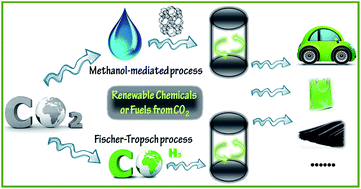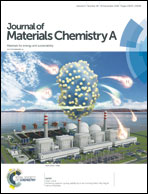Recent advances in direct catalytic hydrogenation of carbon dioxide to valuable C2+ hydrocarbons
Abstract
As one of the most effective methods, CO2 hydrogenation through heterogeneous catalysis is a promising means to mitigating the detrimental effects of anthropogenic CO2 that also accomplishes the effective recycling of carbon element. Considering the inertness of the CO2 molecule as well as the subsequent low chain propagation activity, the products are usually small molecules such as methane, methanol and formic acid. Furthermore, the imprecise regulation of C–C coupling further hinders the acquisition of target products. These problems make CO2 hydrogenation to useful C2+ hydrocarbons more challenging. Therefore, the rational design and fabrication of highly efficient and selective catalysts, including promoter-modified single metal catalysts, composite catalysts and bimetallic catalysts, is an inevitable process to upgrade the end products of CO2 utilization. This review will focus on the recent developments in the highly selective formation of C2+ hydrocarbons, especially the utilization of composite catalysts or multi-functional catalysts, which indicate the great potential derived from the synergistic effect of multi-active sites.



 Please wait while we load your content...
Please wait while we load your content...